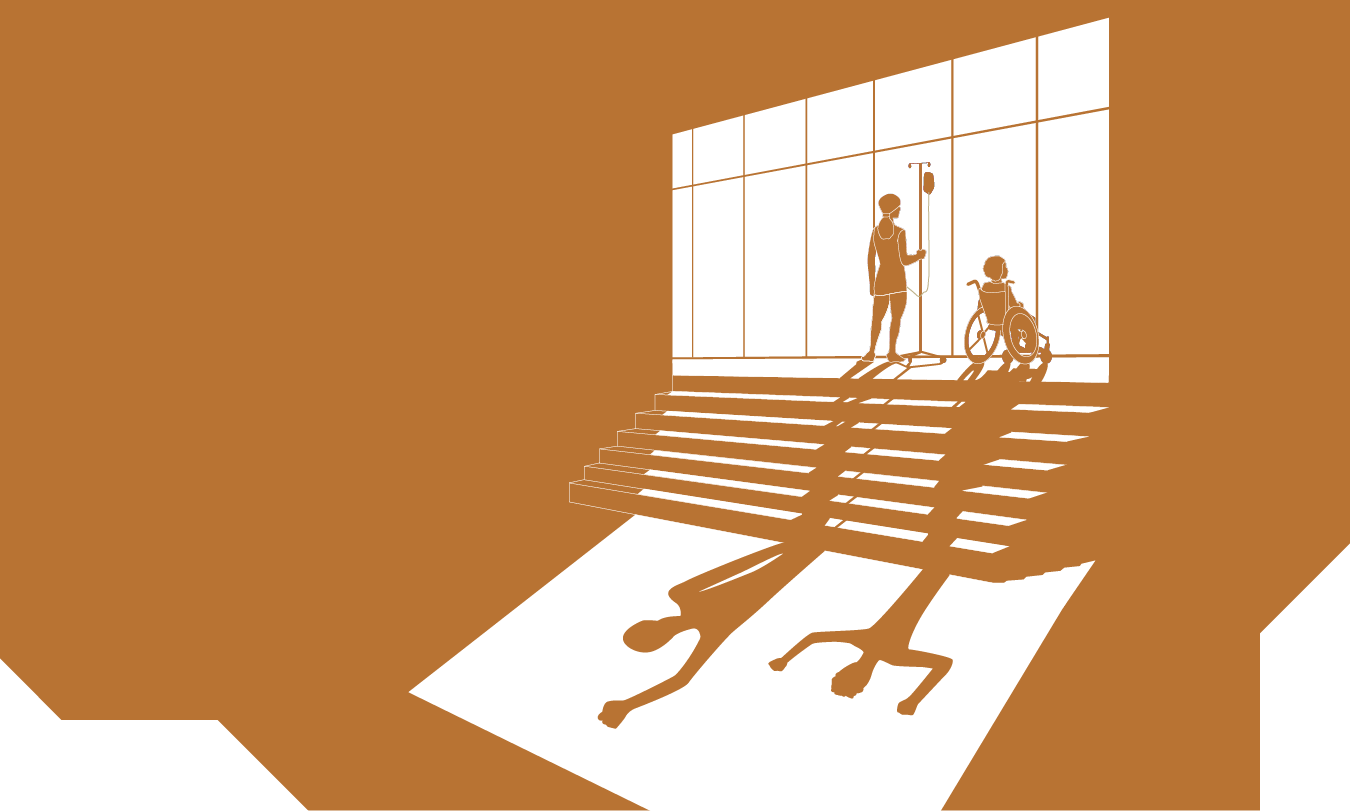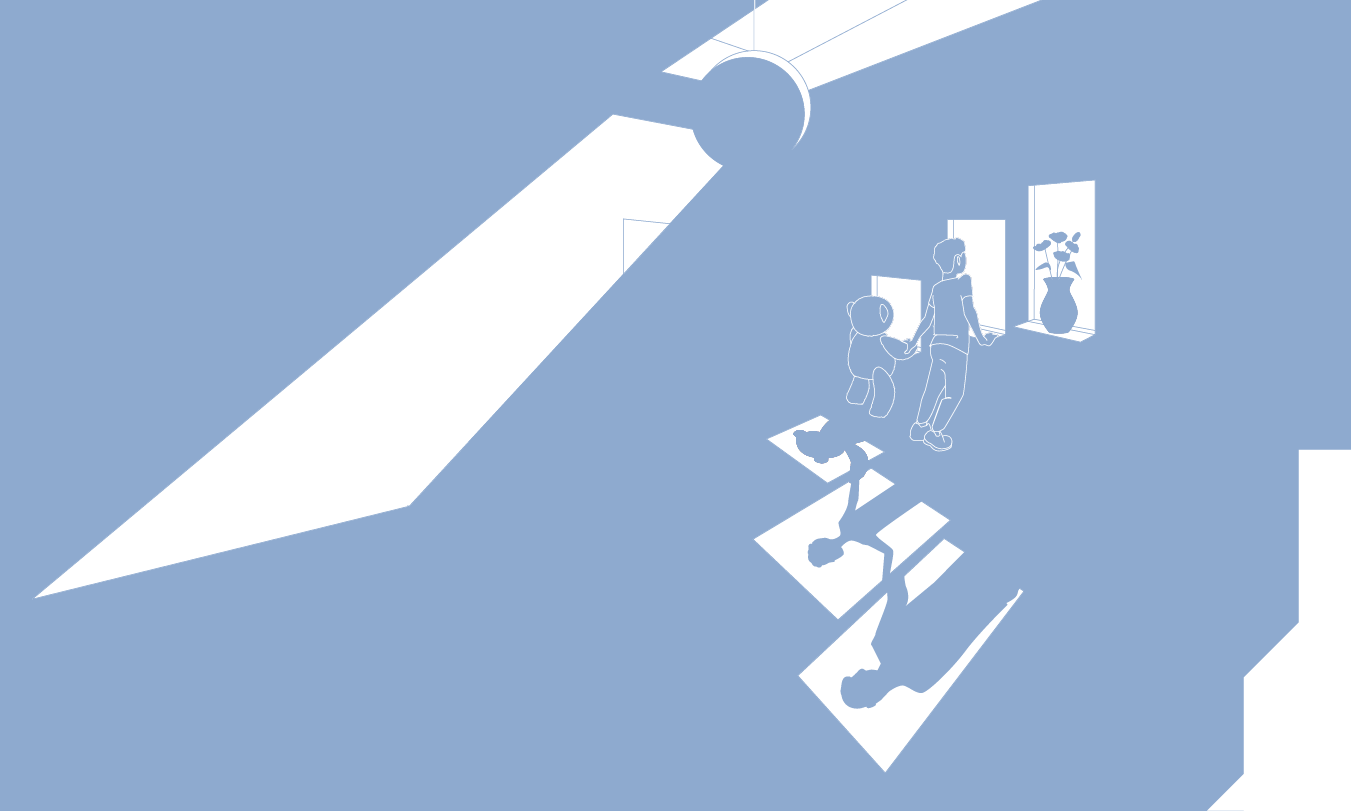Spatial antropodysmorphy

Spatial anthropodysmorphy refers to the change in the perception of space by people who are existentially physically or mentally ill. The term is a neologism that is composed of the German word ”Raum” meaning space, and the ancient Greek words and syllables ”anthropos”, meaning human, ”dys”, meaning bad or deficient, and ”morphe”, meaning form or shape. We coined the term in 2008 to give a name to the results of a qualitative study on the spatial perception of women with breast cancer. At that time we stated: “When the body falls ill, space falls ill with it” (Vollmer, Koppen, 2010, Utz Verlag).. After being diagnosed with cancer, the women suddenly experienced their surroundings as darker, more confined and crowded than their healthy partners. An experience that continued long after the therapy and led to a high level of suffering among the women. Only those who reported spatial changes, from having moved to tearing down walls, experienced a relief of their negative feelings.
In the meantime our observations have been quantitatively tested and we know that not only physically ill people show changes in perception. It is rather the perception of one’s own body or one’s own physicality that changes in the course of a serious illness and expresses itself as a change in space. Why are body and spatial perception so closely connected? There are several explanatory models for this, one of which is the theory of spatial anthropodysmorphy.
Meanwhile, the term refers to the scientific-theoretical model to explain the “deformation of space along the unconsciously experienced deformation of the body”. In the book Die Erkrankung des Raumes (Vollmer, Koppen, 2010) we present the model for the first time. In 2018 in a book contribution (Vollmer, Koppen, 2018, Transcript Verlag), we publish parts of the quantitative measurements on the stress-induced change in the perception of architecture by chronically and severely ill people. While the theory of spatial anthropodysmorphy helps scientists to further explore “the deep black hole” that many people understand without ever having fallen into it, it opens up entirely new possibilities for architects to create healing and health-promoting environments.
Architecture as 2nd body

Architecture as 2nd body refers to an architectural concept that derives its perceptual quality from that of the human body. “What if tomorrow the smallest space we inhabit, our body, will no longer offer protection?” (Vollmer, Koppen, 2010). This question is not only asked by people with a physical illness. We all know the feeling of being defenseless, thin-skinned, vulnerable from time to time. In such phases, to find an environment that surrounds us, that allows us to withdraw and be private without isolating us, embodies – in the most literal sense – the space we experienced most intensely: the womb.
Architecture as a second body does not derive the morphology, i.e. form and shape, for its buildings from this early body-space experience, but rather its quality of experience or perception.
We coined the term 2010 in the title of a Dutch publication (Koppen, Vollmer, 2010, layout 11) that summarized the results of the nationwide study on design factors of university hospitals. In the more than 300 interviews conducted, 80% of those questioned spoke of “bodily injury” when describing the quality of individual building sections. Today we understand which design factors and design criteria reinforce this impression and which counteract it. We use the latter for the design of ourarchitecture as a 2nd body.
Form follows needs

Form Follows Needs refers to an architectural approach that subordinates the functional requirements of a building to the needs of the users or derives the former from the latter.
For us, this approach is particularly important in design theory (Vollmer, 2017, Braun Verlag), as it requires the in-depth understanding of human-environment interaction that is inherent of architectural psychology. While at the beginning we usually spoke of the “urgently needed paradigm shift – from a demand-oriented architecture to a need-oriented one”, we now summarize this endeavor in the terminology Form Follows Needs (Vollmer, 2020, Detail Verlag).
Exercising the Form Follows Needs architectural approach is not always without complications, as needs change or even contradict each other in the course of life. A building, which usually has to outlast several generations, should take this into account without relying too much on flexibility and losing identification through its unambiguous architectural expression.
